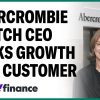The investing information provided on this page is for educational purposes only. NerdWallet does not offer advisory or brokerage services, nor does it recommend or advise investors to buy or sell particular stocks, securities or other investments.
When Ange Matthews started her first full-time position as an associate recruiter in 2007, she earned $40,000. Graduating amid the 2007-09 recession, “It was really hard to find a job,” says Matthews. After several months of searching, she accepted “the best option available.”
As she lived in her mom’s basement in New York City, Matthews did the math on how long it would take to get promoted and to pay her student loans at her current salary.
“I’d have to work here for 10 years just to get to $50,000,” she says, referring to the salary she could earn in her current role.
That’s when Matthews knew she had to do something different. She began investing in 2008 and today is an investment coach based in Dallas. Here’s what Matthews is doing to build generational wealth for her children, family and community.
What inspired Matthews to start building generational wealth?
Matthews realized after finishing school that she needed a way to make more money, as well as a way to build personal finance and investing skills to grow her wealth.
Already working 60- to 70-hour weeks, a part-time gig on top of her full-time job was out of the question. She initially built a side hustle making and selling jewelry in New York City markets but ultimately wanted to harness the power of investing and compound interest.
Compound interest consists of both the money you earn on your savings or investment and the money those profits earn. In other words, says Matthews, “your money comes back with friends.”
To get started, Matthews created her first budget and set up an income-based repayment program for her student loans. At the time, the interest those student loans were charging was less than the average return of the S&P 500
SPX,
So she saved money by making a reduced payment and then investing the savings.
Matthews also realized that she was comfortable living with a smaller emergency fund if it meant she could begin investing. Creating a plan for her money allowed Matthews to excitedly make progress toward her goals: reducing her educational debt slowly and investing in building wealth for her family. She eventually used the money made in her brokerage accounts toward the down payment on a home and the care of a parent.
Matthews encourages people to think about who they want to help and whether that help will come from salary, savings or investments. Assets with monetary value, from stocks and bonds to property, life insurance, and retirement accounts, can be passed down as generational wealth. Matthews calls generational wealth “100-year money,” or money that helps provide for your children, your children’s children or someone else important in your life.
You might like: I’m 54, single and make $60,000 in a good year. Do I need to leave California to buy a house?
What’s the happy investor method?
It can feel challenging to start budgeting and investing, especially if you’re overwhelmed by the financial system or have experienced generational or financial trauma.
“When folks think about money, personal finance and financial empowerment, as well as investing, it gets really disempowering,” says Matthews.
One way to keep from feeling overwhelmed is to focus on what motivates you, Matthews says. Her happy investor method focuses on identifying money goals that spark your joy. She also suggests reframing those goals in terms of how you’re making a difference in your life and the life of your community. The desire to invest on behalf of someone you love in order to eventually pass down wealth can be a strong motivation to get started.
She emphasizes that the happy approach is not about cutting out that latte, living without joys or pleasures, or diminishing the quality of your life. Instead, she wants the process to be engaging and motivating, if not fun.
“The criteria for success isn’t necessarily to be a multimillionaire,” says Matthews. “We want to make sure we are who we hope to be on the other side” of a financial decision.
Related: Building generational wealth is about more than property and assets. This is how one father and entrepreneur is doing it.
What kinds of strategies has Matthews used to create savings for her kids?
Turning those 100-year money goals into reality is especially important to Matthews now that she’s the parent of a 2-year-old and a 5-year-old. Her approach to investing for her kids is to invest passively through custodial investment accounts.
Passive investing
Passive investing involves purchasing securities that mirror stock market indexes and holding them long-term. Matthews places her money in index or exchange-traded funds that track the stock market. That way, says Matthews, “your money is growing with or without your day-to-day involvement.” Passive investing is a lower-maintenance and lower-risk strategy than active investing, which entails researching, buying and selling individual stocks to beat the market.
Plus: Working mothers talk about ‘mom tax’ — the financial toll of motherhood
Custodial brokerage and retirement accounts
Matthews puts her passive investing approach into action by opening and funding custodial investment accounts for her children.
A custodial brokerage account is an investment account an adult can open on behalf of a child, who can access the account when they reach the age of 18 or 21, depending on the state. Custodial brokerage accounts, also called UGMA or UTMA accounts, are considered taxable brokerage accounts under the Uniform Gift to Minors Act or Uniform Transfer to Minors Act.
According to the U.S. Social Security Administration, “This Act allows donors to make gifts to minors that are free of tax burdens.” Meaning, adults may make tax-free contributions to a UGMA or UTMA account up to the IRS gift limit, or $17,000 in 2023. The money invested in these accounts may be withdrawn at any time without penalty.
Matthews intends for the funds in her children’s brokerage accounts to be used for life-changing experiences throughout their lives; the funds aren’t earmarked for retirement or education.
Custodial retirement accounts, such as a custodial IRA or custodial Roth IRA, are owned by a minor, but an adult manages the account and all its assets. If your child has earned income — say through babysitting, a retail job, or a lawn-mowing gig — a custodial retirement account is another option for building generational wealth, and it comes with specific tax advantages. For instance, contributions to a Roth IRA are made after taxes and grow tax-free.
Custodial accounts can be a good way to introduce kids to money concepts and help them start tracking how the market performs. To get her kids excited about investing, Matthews slightly departs from her passive investing strategy: She and her kids buy stock in toy, film, and consumer goods companies that her family uses and can relate to. It’s deliberate and sparks joy in all of them.
And above all, says Matthews, “We just really make it fun and light for them.”
More From NerdWallet
Alieza Durana writes for NerdWallet. Email: [email protected].
Read the full article here













